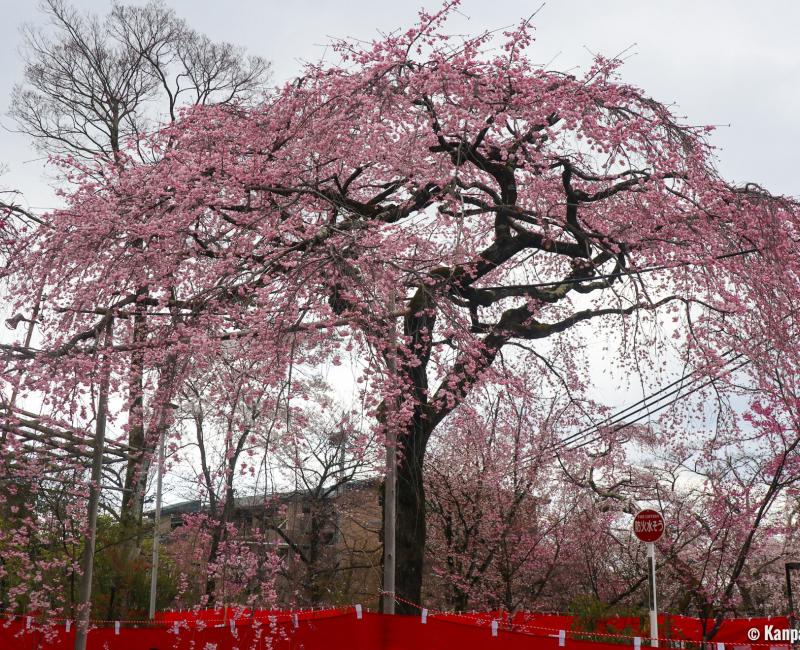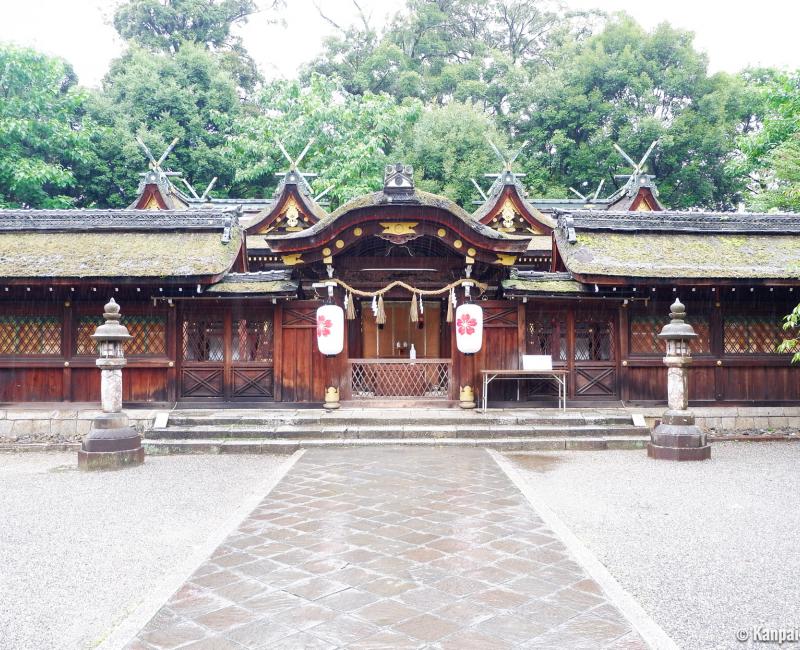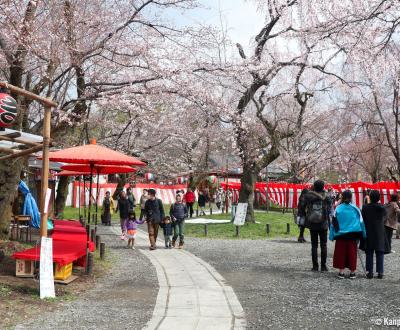Hirano-jinja
The Cherry Trees Festival in the North of Kyoto
Hirano-jinja is a small Shinto shrine located in Kita ward, near the Golden Pavilion in the north-west of Kyoto. It is one of the twenty shrines protecting the imperial power during Heian period (794 – 1185). It is renowned for its garden where grow several hundreds of cherry tree varieties blooming during one month between March and April. In September 2018, typhoon Jebi destroyed Haiden, the ceremonial pavilion of kasuga-zukuri style.
Hirano-jinja used to be favored by Japanese nobility and was first built in Nara in 782 to protect the reigning imperial power and ward off evil spirits that were said to wander in the former capital. In 794, the shrine was transferred in Kyoto along with the imperial power, at the request of Emperor Kanmu. Four gods are enshrined in Hirano-jinja:
- Imakinokami, bestowing vitality and life force,
- Himenokami, for life energy,
- Furuakinokami, presiding over exorcism; and,
- Kudonokami, the protector of the imperial kitchens.

The sakura garden and its spring festival
At that time, aristocrats customarily offered a cherry tree to the shrine in order to ensure their family’s success and prosperity. And that is how Hirano came to be the garden of hundreds sakura 🌸. The trees were said to enhance the vitality of those who planted them.
Since 985, Hirano-jinja celebrates the blooming of its cherry trees during Sakura Matsuri. Food stalls and tables are arranged under the trees for one month, to the pleasure of visitors who come in number for Ohanami. On the second Sunday of April, a parade and a music and dance festival also take place in the shrine’s grounds.
Haiden, the pavilion destroyed by typhoon Jebi in 2018
Unfortunately, on September 04, 2018, Hirano-jinja was greatly damaged by powerful typhoon 🌀 Jebi. Several cherry trees were uprooted and the Haiden ceremonial pavilion, built in 1650 on pillars in the center of the grounds, collapsed. A fund raising has been opened to help collect the money for reconstruction, which was achieved in September 2021. The main hall Honden also underwent recent renovation works, until December 2022.

A quiet visit on the rest of the time
Beside spring, the shrine is quiet and there is plenty of time to enjoy the place’s specific architecture. Starting from the great torii ⛩️ gate at the entrance, an alley bordered by beautiful red lanterns 🏮 leads to religious constructions built in the same kasuga-zukuri style than Nara’s Kasuga Taisha. The wonderful cypress barks roofs covered with moss are immediately noticeable.
A little bit behind from the central pavilion now under repair works, a gigantic sacred tree, girdled by a hemp rope and white paper garlands shaped in lightning bolts attracts worshippers. At the base of the tree, the holy stone is the largest magnetite stone in Japan. Due to its magnetic properties, feudal period’s Japanese thought the rock was hiding mysterious forces and inhabited by godly spirits. It is recommended to touch it to receive its energy.
Located a few hundred meters away from the great Kitano Tenmangu shrine, Hirano-jinja offers a short peaceful break before diving back in the touristic flow of famous temples Kikaku-ji and Ryoan-ji, listed in the Unesco World Heritage and victim of their success.


